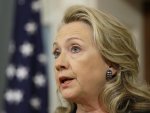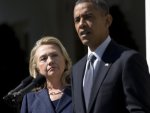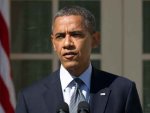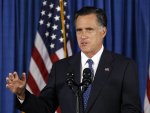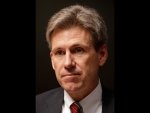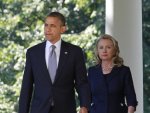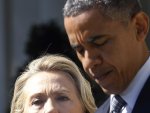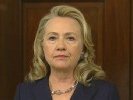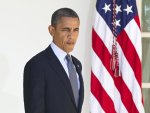USCoversUpPolishMassacre_inlnews.com
US Covers Up Polish Massacre www.inlnews.com
Www.inlnews.com is 300,000th Top Website in Poland
USCoversUpPolishMassacre
Visit International News Limited for the best values on: domain names-domain transfers
USAWeeklyNewsNews Easy To find Hard To Leave EdinburghFringeFest USAWeekendNews
YahooMail HotMail GMail MyWayMail AOLMail INLNs CNNWorld IsraelVideoNs NYTimes
JapaNs AusNs WorldVideoNs WorldFinanceChinaDaily IndiaNs
USADaily BBC EuroNs A
AdeaideNews TasNews ABCTas DarwinN Top Stories Video/Audio Reuters AP AFP The Christian Science Monitor U.S. News & World Report
AFP Features Reuters Life! NPR The Advocate Pew Daily Number Today in History Obituaries Corrections Politics LocalNews BBC News
Visit International News Limited for the best values on: domain names-domain transfers
INLNews YahooMail HotMail GMail AOLMailUSA MAILYahooMail HotMailGMail AOLMail MyWayMail CNNWorld IsraelVideoNs
INLNsNYTimes WashNs AustStockEx WorldMedia JapanNs AusNs World VideoNs WorldFinance ChinaDaily IndiaNs USADaily BBC EuroNsABCAust
WANs NZNews QldNs MelbAge AdelaideNs TasNews ABCTas DarwinNs USA MAIL
Visit International News Limited for the best values on: domain names-domain transfers
Click Here for the best range of Amazon Computers
Click Here for INL News Amazon Best Seller Books
Click Here for the best range of Amazon Computers
Click Here for INL News Amazon Best Seller Books
Amazon Electronics - Portable Projectors
Click Here for INL News Amazon Best Seller Books
“...'Japan Earthquake' and 'accidents' that occurred March 11, 2011,
were deliberate acts of tectonic nuclear warfare...."
.........Leuren Moret an expert witness at the International Criminal Tribunal For Afghanistan At Tokyo.
Click on the below link for more on this subject
http://inlnews.com/JapaneseEarthquakeDebate.html 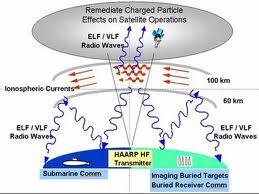


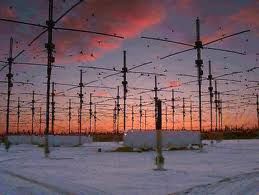
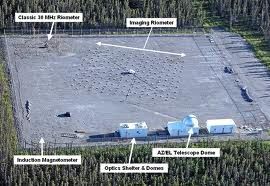
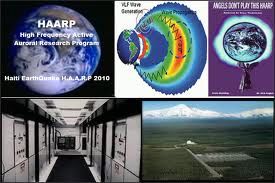
High Frequency Active Auroral Research Program HAARP
Could The HAARP Project
Be For Mind Control?
Click on the below link for more on this subject
http://inlnews.com/JapaneseEarthquakeDebate.html
Documents show U.S. covered up Stalin's massacre
Documents released Sept. 10 and seen in advance by The Associated Press lend weight to the belief that suppression within the highest levels of the U.S. government helped cover up Soviet guilt in the killing of some 22,000 Polish officers and other prisoners in the Katyn forest and other locations in 1940.
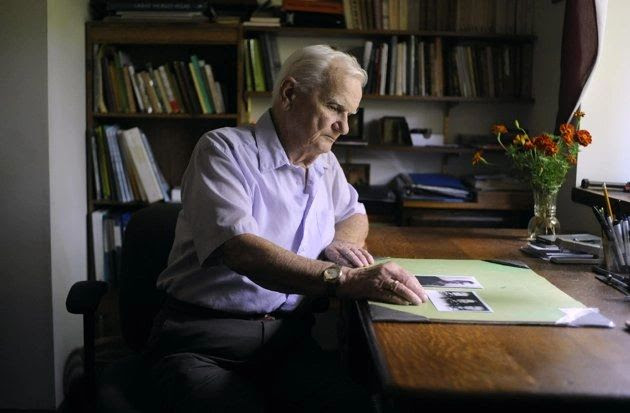
In this Friday, Sept. 7, 2012 photo, Franciszek Herzog looks at photographs of his father at his home in Hebron, Conn. Herzog's father and uncle both died in the massacres. (AP Photo/Jessica Hill
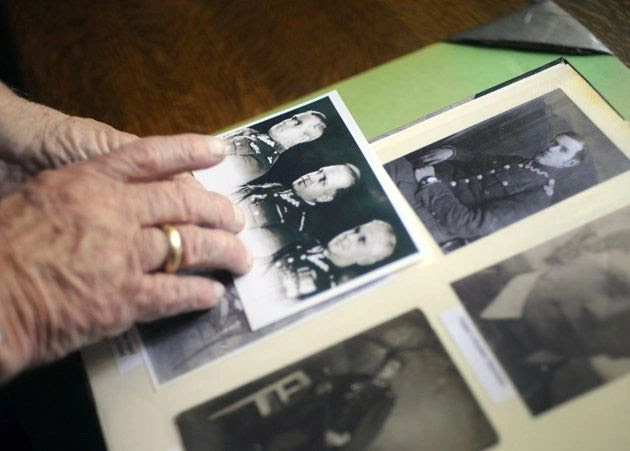
In this Friday, Sept. 7, 2012 photo, Franciszek Herzog looks at photographs of his father at his home in Hebron, Conn. Herzog's father and uncle both died in the massacres. (AP Photo/Jessica Hill)

This 1938 photo provided by the family shows Franciszek Herzog. Herzog died in the massacres. (AP Photo/Courtesy of Herzog Family)

This 1938 photo provided by the family shows Franciszek Herzog. Herzog died in the massacres. (AP Photo/Courtesy of Herzog Family)

A memorial to the victims of Katyn, the Soviet massacre of 22,000 Polish officers in 1940, in Warsaw, Poland pictured on Monday, Sept. 10, 2012. On Monday the U.S. National Archives is releasing about 1,000 newly declassified documents related to Katyn. Some shed further light on decades of suppression of Soviet guilt within the U.S. government. The cover-up began during World War II when the U.S. needed the Soviets to defeat Germany and Japan, and continued on some level long after. (AP Photo/Czarek Sokolowski
. In this Feb. 6, 1952 file photo, a masked former Polish soldier testifies on the 1940 Katyn Forest massacre to a house committee in Washington. Documents released Monday, Sept. 10, 2012 lend weight to the belief that suppression within the highest levels of the U.S. government helped cover up Soviet guilt in the killing of some 22,000 Polish officers and other prisoners in the Katyn forest and other locations in 1940. In a final report released in 1952, the committee declared there was no doubt of Soviet guilt, and called the massacre "one of the most barbarous international crimes in world history." It found that Roosevelt's administration suppressed public knowledge of the crime, but said it was out of military necessity. It also recommended the government bring charges against the Soviets at an international tribunal - something never acted upon. Translator Roman Pucinski is at center right. On the rostrum are committee members, from left, Reps. Timothy Sheehan, R-Ill., Alvin E. O’Konski, R-Wis., George A. Dondero, R-Mich., Ray J. Madden, D-Ind., Daniel J. Flood, D-Pa., Foster Furcolo, D-Mass., and Thaddeus M. Machrowicz, D-Mich. (AP Photo/Bill Allen)
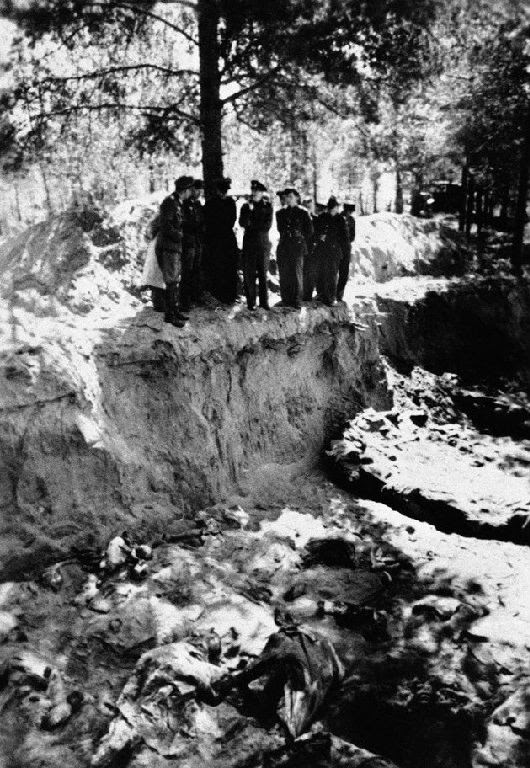
This Feb. 4, 1952, photo, shows a view of a partially emptied mass grave in the Katyn forest where a massacre of some 10,000 Polish prisoners of war took place in May 1943, near Smolensk, Russia. Col. John H. van Vliet is shown in the group at the edge of the trench, and van Vliet is convinced that the Russians, not the Germans, were responsible for the massacre. The Obama administration is opposing a Jewish group's bid to levy civil fines against Russia for failing to obey a court order to return its historic books and documents — a dispute which has halted the loan of Russian art works for exhibit in the United States. In a recent court filing, the Justice Department argued that judicial sanctions against Russia in this case would be contrary to U.S. foreign policy interests and inconsistent with U.S. law. The Jewish group, Chabad-Lubavitch of Brooklyn, N.Y., has already persuaded Chief Judge Royce Lamberth of the U.S. District Court here that it has a valid claim to the tens of thousands of religious books and manuscripts, some up to 500 years old, which record the group's core teachings and traditions. (AP Photo)
Exclusive: Memos show US hushed up Soviet crime
By RANDY HERSCHAFT and VANESSA GERA | Associated Press – Mon, Sep 10, 2012 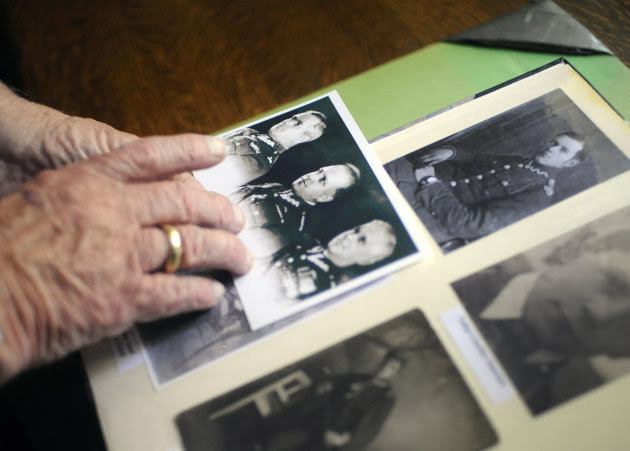
both died in the massacres. (AP Photo/Jessica Hill)
In this Friday, Sept. 7, 2012 photo, Franciszek Herzog looks at photographs of his father at his home in Hebron, Conn. Documents released Monday, Sept. 10, 2012, and seen in advance by The Associated Press …
WARSAW, Poland (AP) — The American POWs sent secret coded messages to Washington with news of a Soviet atrocity: In 1943 they saw rows of corpses in an advanced state of decay in the Katyn forest, on the western edge of Russia, proof that the killers could not have been the Nazis who had only recently occupied the area.
The testimony about the infamous massacre of Polish officers might have lessened the tragic fate that befell Poland under the Soviets, some scholars believe. Instead, it mysteriously vanished into the heart of American power. The long-held suspicion is that President Franklin Delano Roosevelt didn't want to anger Josef Stalin, an ally whom the Americans were counting on to defeat Germany and Japan during World War II.
Documents released Monday and seen in advance by The Associated Press lend weight to the belief that suppression within the highest levels of the U.S. government helped cover up Soviet guilt in the killing of some 22,000 Polish officers and other prisoners in the Katyn forest and other locations in 1940.
The evidence is among about 1,000 pages of newly declassified documents that the United States National Archives released and is putting online. Ohio Rep. Marcy Kaptur, who helped lead a recent push for the release of the documents, called the effort's success Monday a "momentous occasion" in an attempt to "make history whole."
Historians who saw the material days before the official release describe it as important and shared some highlights with the AP. The most dramatic revelation so far is the evidence of the secret codes sent by the two American POWs — something historians were unaware of and which adds to evidence that the Roosevelt administration knew of the Soviet atrocity relatively early on.
The declassified documents also show the United States maintaining that it couldn't conclusively determine guilt until a Russian admission in 1990 — a statement that looks improbable given the huge body of evidence of Soviet guilt that had already emerged decades earlier. Historians say the new material helps to flesh out the story of what the U.S. knew and when.
The Soviet secret police killed the 22,000 Poles with shots to the back of the head. Their aim was to eliminate a military and intellectual elite that would have put up stiff resistance to Soviet control. The men were among Poland's most accomplished — officers and reserve officers who in their civilian lives worked as doctors, lawyers, teachers, or as other professionals. Their loss has proven an enduring wound to the Polish nation.
[Slideshow: Color photos from inside Hitler's home]
In the early years after the war, outrage by some American officials over the concealment inspired the creation of a special U.S. Congressional committee to investigate Katyn.
In a final report released in 1952, the committee declared there was no doubt of Soviet guilt, and called the massacre "one of the most barbarous international crimes in world history." It found that Roosevelt's administration suppressed public knowledge of the crime, but said it was out of military necessity. It also recommended the government bring charges against the Soviets at an international tribunal — something never acted upon.
Despite the committee's strong conclusions, the White House maintained its silence on Katyn for decades, showing an unwillingness to focus on an issue that would have added to political tensions with the Soviets during the Cold War.
___
It was May 1943 in the Katyn forest, a part of Russia the Germans had seized from the Soviets in 1941. A group of American and British POWs were taken against their will by their German captors to witness a horrifying scene at a clearing surrounded by pine trees: mass graves tightly packed with thousands of partly mummified corpses in well-tailored Polish officers uniforms.
The Americans — Capt. Donald B. Stewart and Lt. Col. John H. Van Vliet Jr. — hated the Nazis and didn't want to believe the Germans. They had seen German cruelty up close, and the Soviets, after all, were their ally. The Germans were hoping to use the POWs for propaganda, and to drive a wedge between the Soviet Union and its Western Allies.
But returning to their POW camps, the Americans carried a conviction that they had just witnessed overwhelming proof of Soviet guilt. The corpses' advanced state of decay told them the killings took place much earlier in the war, when the Soviets still controlled the area. They also saw Polish letters, diaries, identification tags, news clippings and other objects — none dated later than spring of 1940 — pulled from the graves. The evidence that did the most to convince them was the good state of the men's boots and clothing: That told them the men had not lived long after being captured.
Stewart testified before the 1951 Congressional committee about what he saw, and Van Vliet wrote reports on Katyn in 1945 and 1950, the first of which mysteriously disappeared. But the newly declassified documents show that both sent secret encoded messages while still in captivity to army intelligence with their opinion of Soviet culpability. It's an important revelation because it shows the Roosevelt administration was getting information early on from credible U.S. sources of Soviet guilt — yet still ignored it for the sake of the alliance with Stalin.
One shows head of Army intelligence, Gen. Clayton Bissell, confirming that some months after the 1943 visit to Katyn by the U.S. officers, a coded request by MIS-X, a unit of military intelligence, was sent to Van Vliet requesting him "to state his opinion of Katyn." Bissell's note said that "it is also understood Col. Van Vliet & Capt. Stewart replied."
MIS-X was devoted to helping POWs held behind German lines escape; it also used the prisoners to gather intelligence.
A statement from Stewart dated 1950 confirms he received and sent coded messages to Washington during the war, including one on Katyn: "Content of my report was aprx (approximately): German claims regarding Katyn substantially correct in opinion of Van Vliet and myself."
The newly uncovered documents also show Stewart was ordered in 1950 — soon before the Congressional committee began its work — never to speak about a secret message on Katyn.
Krystyna Piorkowska, author of the recently published book "English-Speaking Witnesses to Katyn: Recent Research," discovered the documents related to the coded messages more than a week ago. She was one of several researchers who saw the material ahead of the public release.
She had already determined in her research that Van Vliet and Stewart were "code users" who had gotten messages out about other matters. But this is the first discovery of them communicating about Katyn, she said.
Another Katyn expert aware of the documents, Allen Paul, author of "Katyn: Stalin's Massacre and the Triumph of Truth," told the AP the find is "potentially explosive." He said the material does not appear in the record of the Congressional hearings in 1951-52, and appears to have also been suppressed.
He argues that the U.S. cover-up delayed a full understanding in the United States of the true nature of Stalinism — an understanding that came only later, after the Soviets exploded an atomic bomb in 1949 and after Poland and the rest of Eastern Europe were already behind the Iron Curtain.
"The Poles had known long before the war ended what Stalin's true intentions were," Paul said. "The West's refusal to hear them out on the Katyn issue was a crushing blow that made their fate worse."
The historical record carries other evidence Roosevelt knew in 1943 of Soviet guilt. One of the most important messages that landed on FDR's desk was an extensive and detailed report British Prime Minister Winston Churchill sent him. Written by the British ambassador to the Polish government-in-exile in London, Owen O'Malley, it pointed to Soviet guilt at Katyn.
"There is now available a good deal of negative evidence," O'Malley wrote, "the cumulative effect of which is to throw serious doubt on Russian disclaimers of responsibility for the massacre."
___
It wasn't until the waning days of Soviet hegemony over Eastern Europe that reformist leader Mikhail Gorbachev publicly admitted to Soviet guilt at Katyn, a key step in Polish-Russian reconciliation.
The silence by the U.S. government has been a source of deep frustration for many Polish-Americans. One is Franciszek Herzog, 81, a Connecticut man whose father and uncle died in the massacre. After Gorbachev's 1990 admission, he was hoping for more openness from the U.S. as well and made three attempts to obtain an apology from President George H.W. Bush.
"It will not resurrect the men," he wrote to Bush. "But will give moral satisfaction to the widows and orphans of the victims."
A reply he got in 1992, from the State Department, did not satisfy him. His correspondence with the government is also among the newly released documents and was obtained early by the AP from the George Bush Presidential Library.
The letter, dated Aug. 12, 1992, and signed by Thomas Gerth, then deputy director of the Office of Eastern European Affairs, shows the government stating that it lacked irrefutable evidence until Gorbachev's admission:
"The U.S. government never accepted the Soviet Government's claim that it was not responsible for the massacre. However, at the time of the Congressional hearings in 1951-1952, the U.S. did not possess the facts that could clearly refute the Soviets' allegations that these crimes were committed by the Third Reich. These facts, as you know, were not revealed until 1990, when the Russians officially apologized to Poland."
Herzog expressed frustration at that reply.
"There's a big difference between not knowing and not wanting to know," Herzog said. "I believe the U.S. government didn't want to know because it was inconvenient to them."9
Documents show U.S. covered up Stalin's massacre
Documents released Sept. 10 and seen in advance by The Associated Press lend weight to the belief that suppression within the highest levels of the U.S. government helped cover up Soviet guilt in the killing of some 22,000 Polish officers and other prisoners in the Katyn forest and other locations in 1940.
Documents show U.S. covered up Stalin's massacre
Documents released Sept. 10 and seen in advance by The Associated Press lend weight to the belief that suppression within the highest levels of the U.S. government helped cover up Soviet guilt in the killing of some 22,000 Polish officers and other prisoners in the Katyn forest and other locations in 1940.
U.S. said to cover up Polish massacre
POLAND WWII captives' secret messages allegedly hidden
U.S. said to cover up Polish massacre (sfgate.com)
https://www.sfgate.com/world/article/U-S-said-to-cover-up-Polish-massacre-3868307.php


Warsaw --
The American POWs sent secret coded messages to Washington with news of a Soviet atrocity: In 1943, they saw rows of corpses in an advanced state of decay in the Katyn forest, on the western edge of Russia, proof that the killers could not have been the Nazis who had only recently occupied the area.
The testimony about the infamous massacre of Polish officers might have lessened the tragic fate that befell Poland under the Soviets, some scholars believe. Instead, it mysteriously vanished into the heart of American power. The long-held suspicion is that President Franklin Delano Roosevelt didn't want to anger Josef Stalin, an ally whom the Americans were counting on to defeat Germany and Japan during World War II.
Documents released last week lend weight to the belief that suppression within the highest levels of the U.S. government helped cover up Soviet guilt in the killing of 22,000 Polish officers and other prisoners in the Katyn forest and other locations in 1940.
Newly declassified documents
The evidence is among about 1,000 pages of newly declassified documents that the U.S. National Archives released and is putting online. Democratic Ohio Rep. Marcy Kaptur, who helped lead a recent push for the release of the documents, called the effort's success Monday a "momentous occasion" in an attempt to "make history whole."
Historians who saw the material days before the official release describe it as important. The most dramatic revelation so far is the evidence of the secret codes sent by the two American POWs - something historians were unaware of and which adds to evidence that the Roosevelt administration knew of the Soviet atrocity relatively early on.
The declassified documents also show the United States maintaining that it couldn't conclusively determine guilt until a Russian admission in 1990 - a statement that looks improbable given the huge body of evidence of Soviet guilt that had already emerged decades earlier. Historians say the new material helps to flesh out the story of what the United States knew and when.
Killed by Soviet secret police
The Soviet secret police killed the 22,000 Poles with shots to the back of the head. Their aim was to eliminate a military and intellectual elite that would have put up stiff resistance to Soviet control. The men were among Poland's most accomplished - officers and reserve officers who in their civilian lives worked as doctors, lawyers, teachers, or as other professionals. Their loss has proven an enduring wound to the Polish nation.
In the early years after the war, outrage by some American officials over the concealment inspired the creation of a special U.S. congressional committee to investigate Katyn.
In a final report released in 1952, the committee declared there was no doubt of Soviet guilt, and called the massacre "one of the most barbarous international crimes in world history." It found that Roosevelt's administration suppressed public knowledge of the crime, but said it was out of military necessity. It also recommended the government bring charges against the Soviets at an international tribunal - something never acted upon.
Despite the committee's strong conclusions, the White House maintained its silence on Katyn for decades, showing an unwillingness to focus on an issue that would have added to political tensions with the Soviets during the Cold War.
Horrifying scene
It was May 1943 in the Katyn forest, a part of Russia the Germans had seized from the Soviets in 1941. A group of American and British POWs were taken against their will by their German captors to witness a horrifying scene at a clearing surrounded by pine trees: mass graves tightly packed with thousands of partly mummified corpses in well-tailored Polish officers uniforms.
The Americans - Capt. Donald B. Stewart and Lt. Col. John H. Van Vliet Jr. - hated the Nazis and didn't want to believe the Germans. They had seen German cruelty up close, and the Soviets, after all, were their ally. The Germans were hoping to use the POWs for propaganda, and to drive a wedge between the Soviet Union and its Western Allies.
But returning to their POW camps, the Americans carried a conviction that they had just witnessed overwhelming proof of Soviet guilt. The corpses' advanced state of decay told them the killings took place much earlier in the war, when the Soviets still controlled the area. They also saw Polish letters, diaries, identification tags, news clippings and other objects - none dated later than spring of 1940 - pulled from the graves. The evidence that did the most to convince them was the good state of the men's boots and clothing: That told them the men had not lived long after being captured.
Stewart testified before the 1951 congressional committee about what he saw, and Van Vliet wrote reports on Katyn in 1945 and 1950, the first of which mysteriously disappeared. But the newly declassified documents show that both sent secret encoded messages while still in captivity to army intelligence with their opinion of Soviet culpability. It's an important revelation because it shows the Roosevelt administration was getting information early on from credible U.S. sources of Soviet guilt - yet still ignored it for the sake of the alliance with Stalin.
One shows head of Army intelligence, Gen. Clayton Bissell, confirming that some months after the 1943 visit to Katyn by the U.S. officers, a coded request by MIS-X, a unit of military intelligence, was sent to Van Vliet requesting him "to state his opinion of Katyn." Bissell's note said that "it is also understood Col. Van Vliet & Capt. Stewart replied."
MIS-X was devoted to helping POWs held behind German lines escape; it also used the prisoners to gather intelligence.
A statement from Stewart dated 1950 confirms he received and sent coded messages to Washington during the war, including one on Katyn: "Content of my report was aprx (approximately): German claims regarding Katyn substantially correct in opinion of Van Vliet and myself."
The newly uncovered documents also show Stewart was ordered in 1950 - soon before the congressional committee began its work - never to speak about a secret message on Katyn.
Krystyna Piorkowska, author of the recently published book "English-Speaking Witnesses to Katyn: Recent Research," discovered the documents related to the coded messages more than a week ago. She was one of several researchers who saw the material ahead of the public release.
'Code users'
She had already determined in her research that Van Vliet and Stewart were "code users" who had gotten messages out about other matters. But this is the first discovery of them communicating about Katyn, she said.
Another Katyn expert aware of the documents, Allen Paul, author of "Katyn: Stalin's Massacre and the Triumph of Truth," said the find is "potentially explosive." He said the material does not appear in the record of the congressional hearings in 1951-52, and appears to have also been suppressed.
He argues that the U.S. cover-up delayed a full understanding in the United States of the true nature of Stalinism - an understanding that came only later, after the Soviets exploded an atomic bomb in 1949 and after Poland and the rest of Eastern Europe were already behind the Iron Curtain.
"The Poles had known long before the war ended what Stalin's true intentions were," Paul said. "The West's refusal to hear them out on the Katyn issue was a crushing blow that made their fate worse."
The historical record carries other evidence Roosevelt knew in 1943 of Soviet guilt. One of the most important messages that landed on FDR's desk was an extensive and detailed report British Prime Minister Winston Churchill sent him. Written by the British ambassador to the Polish government-in-exile in London, Owen O'Malley, it pointed to Soviet guilt at Katyn.
"There is now available a good deal of negative evidence," O'Malley wrote, "the cumulative effect of which is to throw serious doubt on Russian disclaimers of responsibility for the massacre."
It wasn't until the waning days of Soviet hegemony over Eastern Europe that reformist leader Mikhail Gorbachev publicly admitted to Soviet guilt at Katyn, a key step in Polish-Russian reconciliation.
__http://news.yahoo.com/ap-exclusive-memos-show-us-hushed-soviet-crime-132109652.html?_esi=1
National Archives page on Katyn: http://www.archives.gov/research/foreign-policy/katyn-massacre
Chris Stevens, U.S. ambassador to Libya killed in rocket attack, served as envoy during revolution
By Dylan Stableford, Yahoo! News | The LookoutChris Stevens, the U.S. ambassador to Libya killed along with three others in a rocket attack outside the American Consulate in Benghazi was "a courageous and exemplary representative of the United States," President Barack Obama said in his initial statement Wednesday condemning the attack.
Initial reports said the slain embassy staffers—who also include foreign service information management officer Sean Smith—were trying to flee the consulate building when they were fired upon by protesters apparently angry over a film they say insults Prophet Muhammad.
However, U.S. officials told The New York Times and CNN on Wednesday that the attack may have been planned by a group that "had either been waiting for an opportunity to exploit like the protests over the video or perhaps even generated the protests as a cover for their attack."
[Also read: President Obama's statement on attack in Benghazi]
According to the Associated Press, a Libyan doctor who treated Stevens said the diplomat died of severe asphyxiation from smoke inhalation and that he tried for 90 minutes to revive him.
Stevens, 52, was the first U.S. ambassador killed in the line of duty since 1979, when Adolph Dubs, U.S. ambassador to Afghanistan, was gunned down in a kidnapping attempt.
"Throughout the Libyan revolution, [Stevens] selflessly served our country and the Libyan people at our mission in Benghazi," Obama said. "As ambassador in Tripoli, he has supported Libya's transition to democracy. His legacy will endure wherever human beings reach for liberty and justice. I am profoundly grateful for his service to my administration, and deeply saddened by this loss."
Stevens, a California native and U.C.-Berkeley grad, was a 21-year veteran of foreign service, the White House said.
"I had the privilege of swearing in Chris for his post in Libya only a few months ago," Secretary of State Hillary Clinton said in a separate statement. "He spoke eloquently about his passion for service, for diplomacy and for the Libyan people. This assignment was only the latest in his more than two decades of dedication to advancing closer ties with the people of the Middle East and North Africa.
[Related: 'Innocence of Muslims': The film that sparked deadly U.S. Embassy attacks]
"As the conflict in Libya unfolded, Chris was one of the first Americans on the ground in Benghazi," Clinton continued. "He risked his own life to lend the Libyan people a helping hand to build the foundation for a new, free nation. He spent every day since helping to finish the work that he started. Chris was committed to advancing America's values and interests, even when that meant putting himself in danger."
In response to the attack, the United States is "deploying elite Marine counterterrorism teams to Libya," Foreign Policy reports. The Pentagon is sending Fleet Anti-Terrorism Teams, or FAST teams, a U.S. defense official told the magazine.
"It's especially tragic because Chris Stevens died in Benghazi because it is a city he fought to save," Obama said later Wednesday morning in hastily arranged public remarks in the Rose Garden of the White House.
Speaking at an impromptu press conference in Jacksonville, Fla., on Wednesday, Mitt Romneycondemned Tuesday's attacks as "disgusting" and "outrageous," but he also attacked the Obama administration for standing by a statement issued by the U.S. Embassy in Cairo that he claimed was an "apology" for American values.
[Related: Romney attacks Obama for sending 'mixed signals' on Middle East violence]
Late Tuesday, Romney issued a statement saying it was "disgraceful that the Obama administration's first response was not to condemn attacks on our diplomatic missions but to sympathize with those who waged the attacks." On Wednesday, he stood by his criticism of the White House.
Here's Stevens' bio from the U.S. Embassy website:
Ambassador Chris Stevens considers himself fortunate to participate in this incredible period of change and hope for Libya. As the President's representative, his job is to develop a strong, mutually beneficial relationship between the United States and Libya. Ambassador Stevens was the American representative to the Transitional National Council in Benghazi during the revolution.
When he's not meeting with government officials or foreign diplomats, you can find Ambassador Stevens meeting with Libyan academics, business people, and civil society activists, exploring Libya's rich archaeological sites, and enjoying Libya's varied cuisine.
After several diplomatic assignments in the Middle East and North Africa, Ambassador Stevens understands and speaks Arabic and French. He likes the Facebook page of the U.S. Embassy in Tripoli and hopes you will, too.
"I had the honor to serve as the U.S. envoy to the Libyan opposition during the revolution," Stevenssaid in May in a video introducing himself to the Libyan people as the new U.S. ambassador there. "And I was thrilled to watch the Libyan people stand up and demand their rights.
[Slideshow: Gunmen storm U.S. consulate in Libya]
"Growing up in California I didn't know much about the Arab world," Stevens continued. "I traveled to North Africa as a Peace Corps volunteer, worked as an English teacher in a town in the high Atlas mountains in Morocco for two years and quickly grew to love this part of the world.
"We know Libya is still recovering from an intense period of conflict," he added. "There are many courageous Libyans who wear the scars of that battle."
Secretary of State Hillary Rodham Clinton …
Secretary of State Hillary Rodham Clinton …
Obama: 'Justice will be done' for Americans …
U.S. Republican presidential nominee …
Obama: U.S. condemns Libya consulate …
Romney stands by Obama criticism on …
US Ambassador to Libya killed in consulate …
U.S. President Barack Obama and Secretary
FILE - U.S. Ambassador Chris Stevens …
U.S. President Barack Obama and Secretary …
U.S. President Barack Obama delivers …
FILE - In this Monday, April 11, 2011 …
FILE - In this Monday, April 11, 2011 …
FILE - In this Monday, April 11, 2011 …
U.S. envoy Chris Stevens listens during …
Hillary Clinton: Chris Stevens' Death …
Christopher Stevens, the U.S. ambassador …
U.S. Republican presidential nominee …
Republican presidential candidate, former …
Obama orders flags to half-staff after Benghazi attack
President Barack Obama on Wednesday ordered American flags flying above government buildings, military vessels and posts around the world be flown at half-staff until sunset on September 16 "as a mark of respect" for the victims of the attack on the U.S. Consulate in Benghazi, Libya.
Obama announced the order in a presidential proclamation a few hours after he appeared in the Rose Garden of the White House tocondemn the "outrageous and shocking attack"that claimed the lives of the U.S. ambassador to Libya, Chris Stevens, and three other Americans.
Mitt Romney has criticized Obama's response to that assault as well as to an incident in which demonstrators stormed the walls of the U.S. Embassy in Cairo and tore down the American flag.








